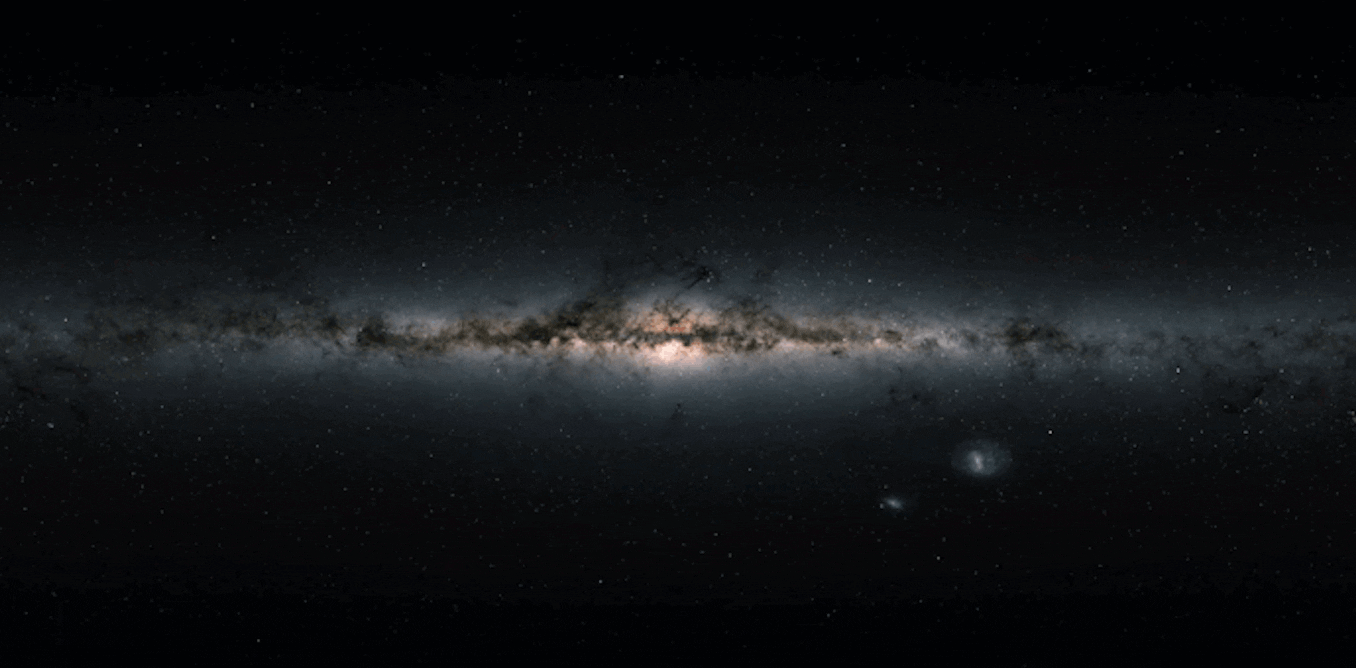Science
Journey to Discover Exoplanets: The Quest for Earth-Like Worlds

On October 6, 1995, Swiss astronomers Michel Mayor and his PhD student Didier Queloz made a groundbreaking announcement at a scientific meeting in Florence, Italy. They detected a planet orbiting a star outside our solar system, marking a pivotal moment in the field of astronomy. The star, known as 51 Pegasi, is located approximately 50 light years away in the constellation Pegasus, and its newly discovered companion, named 51 Pegasi b, was unlike any planet previously recorded.
This gas giant, with a mass at least half that of Jupiter, orbits its star in just over four days, positioned perilously close at one-twentieth of the Earth-Sun distance. Temperatures on this planet soar above 1,000°C, creating an atmosphere akin to a furnace. The discovery was made possible through the use of the Elodie spectrograph, which had been installed at the Haute-Provence observatory in southern France two years prior. This sophisticated instrument allowed the astronomers to analyze the star’s light spectrum, revealing a distinctive “stellar barcode” that indicated the presence of an unseen companion.
A Paradigm Shift in Astronomy
Mayor and Queloz observed 51 Pegasi’s light spectrum shifting rhythmically over a period of 4.23 days, an indication of gravitational influence from 51 Pegasi b. Their findings, published in the journal Nature, initially drew skepticism from the scientific community. The headline questioned the existence of a planet in Pegasus, reflecting doubts about how such a massive planet could form in such a harsh environment.
Despite the initial reservations, follow-up observations confirmed the discovery within weeks. This breakthrough not only identified the first planet orbiting a Sun-like star outside our solar system but also introduced a new category of planets known as “hot Jupiters.” The implications of this discovery were profound, leading to the identification of over 6,000 exoplanets and candidates in the following three decades.
The diversity among these exoplanets is astonishing, ranging from ultra-hot Jupiters with temperatures exceeding 2,000°C to rocky planets in tight orbital chains. The discovery of 51 Pegasi b catalyzed a revolution in astronomy, culminating in the award of the Nobel Prize in Physics to Mayor and Queloz in 2019. This milestone underscored the understanding that most stars likely have their own planetary systems.
The Ongoing Search for Earth-Like Planets
The hunt for an Earth twin, a planet resembling Earth in size, mass, and temperature, continues to capture the imagination of astronomers worldwide. Modern-day explorations, while not as perilous as those of historical explorers, involve sophisticated instruments and global collaborations. One such initiative is the Harps-N spectrograph, mounted on the Telescopio Nazionale de Galileo located in the Canary Islands. This instrument interrupts the journey of starlight, enabling researchers to analyze distant planets.
Historically, the study of exoplanets was constrained by the limited knowledge of our solar system, which was the only known planetary system until the mid-1990s. Theoretical frameworks regarding planetary formation were largely based on the nine planets of our solar system. This narrow perspective changed dramatically with the realization that the universe contains billions of stars and galaxies, leading to a paradigm shift in understanding planetary prevalence.
The mid-20th century saw a pivotal change in scientific consensus, moving away from the belief that planets were rare. Notable claims in the 1940s suggested the existence of planets orbiting nearby stars, igniting interest and speculation about the potential for numerous planets across the Milky Way. This evolving recognition culminated in an article by American astronomer Henry Norris Russell, which proclaimed the likelihood of inhabited planets within our galaxy.
Detection techniques have significantly advanced since the discovery of 51 Pegasi b. One of the prominent methods, the transit technique, involves observing a planet as it passes in front of its star, causing a temporary dimming of the star’s brightness. This technique has led to the discovery of four times more exoplanets compared to the original radial velocity method employed by Mayor and Queloz.
As astronomers continue to refine detection methods, the quest for an Earth-like planet remains a primary objective. Current projects, including the anticipated Harps3 instrument, aim to enhance capabilities for identifying Earth twins. The hope is that over the next decade, this concerted effort will lead to the discovery of a planet mirroring Earth’s characteristics.
While the universe is filled with an astonishing variety of planets, the search for a true Earth twin persists. The potential to discover a planet that could support life as we know it remains the ultimate goal for planetary explorers. As the field of exoplanet research evolves, each new discovery brings us closer to answering fundamental questions about our place in the cosmos.
-

 Health3 months ago
Health3 months agoNeurologist Warns Excessive Use of Supplements Can Harm Brain
-

 Health3 months ago
Health3 months agoFiona Phillips’ Husband Shares Heartfelt Update on Her Alzheimer’s Journey
-

 Science2 months ago
Science2 months agoBrian Cox Addresses Claims of Alien Probe in 3I/ATLAS Discovery
-

 Science2 months ago
Science2 months agoNASA Investigates Unusual Comet 3I/ATLAS; New Findings Emerge
-

 Science1 month ago
Science1 month agoScientists Examine 3I/ATLAS: Alien Artifact or Cosmic Oddity?
-

 Entertainment5 months ago
Entertainment5 months agoKerry Katona Discusses Future Baby Plans and Brian McFadden’s Wedding
-

 Science1 month ago
Science1 month agoNASA Investigates Speedy Object 3I/ATLAS, Sparking Speculation
-

 Entertainment4 months ago
Entertainment4 months agoEmmerdale Faces Tension as Dylan and April’s Lives Hang in the Balance
-

 World3 months ago
World3 months agoCole Palmer’s Cryptic Message to Kobbie Mainoo Following Loan Talks
-

 Science1 month ago
Science1 month agoNASA Scientists Explore Origins of 3I/ATLAS, a Fast-Moving Visitor
-

 Entertainment2 months ago
Entertainment2 months agoLewis Cope Addresses Accusations of Dance Training Advantage
-

 Entertainment4 months ago
Entertainment4 months agoMajor Cast Changes at Coronation Street: Exits and Returns in 2025









